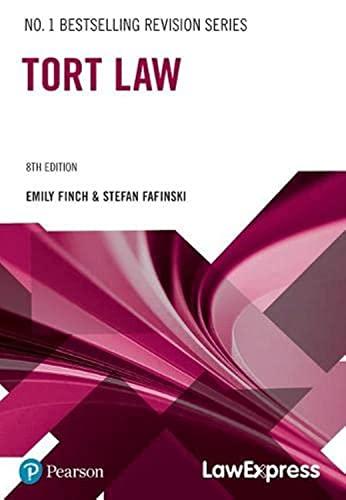Question
Larry offered to sell Stanley his car. In his offer, Larry told Stanley that the car had only been driven 25,000 miles and had never
Larry offered to sell Stanley his car. In his offer, Larry told Stanley that the car had only been driven 25,000 miles and had never been in an accident.
Before accepting Larry's offer, Stanley took the car to a mechanic. The mechanic inspected and appraised the condition of the car. The mechanic reported that the car likely had close to 50,000 miles on it and showed some evidence of being in an accident.
Notwithstanding receiving contradictory information about the car from Larry, Stanley thought the car was a good buy for the price. Stanley bought the car. During the exchange of consideration - cash for the car, Stanley muttered to Larry that he knew that the car was in an accident and driven much more than 25,000 miles, but that he wanted the car anyway because it was still a "great deal." Larry did not respond to Stanley's comments but simply took his cash and turned the car keys over to Stanley.
After driving the car for a few short weeks, it started knocking and pinging. Stanley did not take the car to the mechanic for repair or inspection. He just kept driving the car back and forth to work which was about 90 miles per day, mostly on the highway.Soon though, the minor noises turned into bangs and clunks and eventually the car sounded too unsafe to drive.
Stanley called Larry and told him he was rescinding the contract because the car was a lemon. Knowing a little about the law, Larry accurately reported that the lemon law did not apply when the seller is a private party.
- Stanley then asserted he was still rescinding the contract because the deal was bad from the start because Larry misrepresented the condition of the car when he made the first offer. Stanley argued it was his legal right to rescind the contract and return the car because of Larry's fraudulent misrepresentations.List and define the elements of fraudulent misrepresentation
- Give illustrating examples that demonstrate how EACH element is applied
- Show (explain) how the facts of this case either support or negate EACH element
- Define any other legal concepts you rely upon to support your position
Step by Step Solution
There are 3 Steps involved in it
Step: 1

Get Instant Access to Expert-Tailored Solutions
See step-by-step solutions with expert insights and AI powered tools for academic success
Step: 2

Step: 3

Ace Your Homework with AI
Get the answers you need in no time with our AI-driven, step-by-step assistance
Get Started


